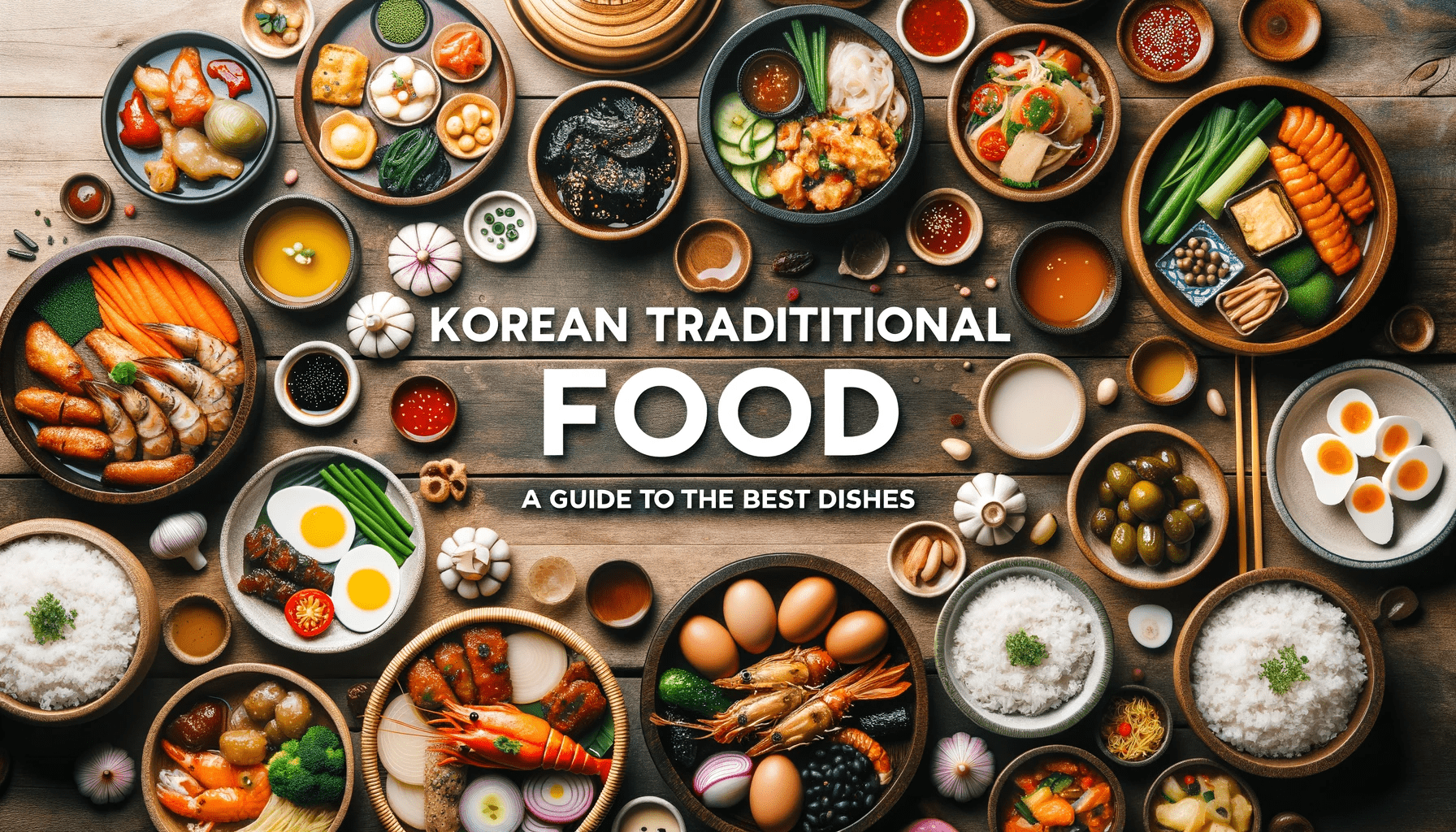Do you love exploring diverse cuisines?
Well, get ready to tantalize your taste buds with the global appeal of Korean food!
From Trader Joe’s to international grocery stores, Korean cuisine has taken the world by storm.
With its rich culinary heritage and unique ingredients like gochujang, preparing authentic Korean dishes has never been easier.
Get ready to embark on a journey of cultural exchange as we delve into traditional recipes, chef creations, and even future trends in vegan and sustainable Korean cuisine.
Get ready for a mouth-watering adventure!
Key Takeaways
- Korean cuisine has gained global popularity and can now be found in various corners of the world.
- Korean food attracts tourists, who seek out authentic Korean restaurants in their own cities, leading to an impact on tourism worldwide.
- Modernization and fusion of Korean cuisine have resulted in innovative twists and the blending of Korean ingredients with international flavors.
- Key ingredients like gochujang and kimchi have become versatile and are used in various dishes, including vegan options, contributing to the sustainability of Korean cuisine.
Introduction to Korean Cuisine’s Global Popularity
You may be surprised by how Korean cuisine’s popularity has spread globally. Korean culinary influence can now be found in various corners of the world, from bustling city streets to remote villages.
One major way that Korean food has impacted tourism is through its ability to attract visitors who are eager to explore new flavors and culinary experiences. Tourists flock to Korea not only for its beautiful landscapes and rich culture but also for its vibrant food scene.
From the iconic kimchi to mouthwatering bibimbap, Korean dishes offer a unique blend of flavors and textures that captivate the taste buds. As a result, many tourists have developed a deep appreciation for Korean cuisine, leading them to seek out authentic Korean restaurants in their own cities or even try their hand at recreating these dishes at home.
The global appeal of Korean food has undoubtedly had a significant impact on tourism worldwide.
Rich Culinary Heritage: Traditional Korean Recipes and Techniques
If you’re a food enthusiast looking to explore new flavors and culinary trends, you’ll be thrilled to learn about the modernization of Korean cuisine and the global fusion of flavors it has embraced.
In this discussion, we will delve into the exciting developments that have taken place in Korean cooking, where traditional recipes and techniques are being reimagined with innovative twists.
Get ready to tantalize your taste buds as we explore three key points:
-
The blending of Korean ingredients with international flavors to create unique and delicious dishes.
-
The influence of global cooking techniques on traditional Korean recipes, resulting in exciting new culinary creations.
-
The growing popularity of fusion restaurants that seamlessly combine elements from different cuisines, showcasing the versatility and adaptability of Korean cuisine.
Modernizing Korean Cuisine
To fully appreciate the modernizing of Korean cuisine, take a stroll through any international grocery store. You’ll be amazed at the variety and creativity that has been infused into traditional Korean dishes. From vegan kimchi to plant-based bulgogi, there’s something for everyone to enjoy.
In fact, vegan Korean food is gaining popularity worldwide as people seek healthier and more sustainable options. Koreans have embraced this trend by incorporating more plant-based ingredients into their recipes without compromising on flavor or authenticity.
The modernization of Korean cuisine can be seen in the fusion of traditional flavors with global influences. As Korea becomes more connected to the rest of the world, chefs are experimenting with different ingredients and techniques to create unique and exciting dishes. This global fusion of flavors has resulted in a vibrant and dynamic food scene that continues to evolve and captivate food enthusiasts around the globe.
Transition: With its rich culinary heritage and innovative spirit, it’s no wonder that Korean food has become a global phenomenon.
Global Fusion of Flavors
Experience the explosion of diverse flavors as culinary traditions from around the world merge with Korean cuisine, resulting in a fusion that tantalizes your taste buds and expands your culinary horizons.
The global fusion of flavors has led to the creation of unique and flavorful combinations that showcase the cross-cultural influences on Korean food. From Mexican-inspired kimchi tacos to Korean-style sushi rolls, these innovative dishes bring together ingredients and techniques from different cuisines to create something truly extraordinary.
The bold and spicy flavors of Korean cuisine blend harmoniously with the delicate subtleties of other culinary traditions, creating a mouthwatering symphony of tastes. Whether you’re indulging in a Korean-Mexican burrito or savoring a Japanese-Korean bibimbap, this fusion of flavors will transport you on a culinary journey like no other.
Get ready to embark on an adventure where traditional meets modern and where taste knows no boundaries.
Key Ingredients: Gochujang
Gochujang is a versatile ingredient that can transform any dish into a flavorful masterpiece. Whether you’re looking to add a kick to your stir-fries, marinades, or even desserts, gochujang has got you covered. Not only does it elevate the taste of your dishes, but it also offers numerous health benefits such as boosting metabolism, aiding digestion, and providing essential vitamins and minerals.
Gochujang adds a unique umami flavor to your favorite recipes. It can be used as a marinade for meats or a sauce for vegetables. Incorporating gochujang into your diet may improve your overall well-being.
Gochujang’s Culinary Versatility
Despite its traditional origins, gochujang’s popularity has expanded beyond Korean cuisine to become a versatile ingredient in various global dishes. This spicy and savory fermented chili paste adds depth and complexity to a wide range of culinary applications. Gochujang’s unique flavor profile combines heat, sweetness, and umami, making it a standout ingredient in both traditional Korean dishes and modern fusion creations.
Here is a table that showcases the diverse uses of gochujang:
| Culinary Application | Flavor Profile | Examples |
|---|---|---|
| Marinades | Spicy, Sweet | Grilled chicken skewers, beef bulgogi |
| Sauces | Umami, Tangy | Bibimbap sauce, dipping sauce for gyoza |
| Dressings | Creamy, Spicy | Gochujang ranch dressing for salads |
Whether you’re looking to spice up your marinades or add a tangy kick to your dressings, gochujang offers endless possibilities. Its versatility knows no bounds as it continues to make its mark in the global culinary scene.
Gochujang’s Health Benefits
Adding gochujang to your meals can provide numerous health benefits due to its high content of antioxidants and capsaicin, which have been linked to boosting metabolism and reducing inflammation.
Gochujang, a staple in Korean cuisine, plays a vital role in the deliciousness of Korean BBQ. The thick, spicy paste is made from fermented soybeans, red chili peppers, rice powder, and salt. It adds a unique depth of flavor to grilled meats and vegetables, creating a mouthwatering experience.
In recent years, gochujang has gained popularity in Western cuisines as well. Its rich umami taste combined with the perfect balance of sweet heat makes it an excellent addition to marinades, dressings, and even dips.
How to Prepare Korean Dishes
If you’re looking to whip up a delicious Korean meal in no time, we’ve got you covered. In this discussion, we’ll explore quick and easy recipes that will satisfy your cravings without taking up too much of your precious time.
We’ll also delve into the debate between traditional versus modern dishes, giving you insight into the evolution of Korean cuisine.
Lastly, we’ll reveal the must-have ingredients that every aspiring Korean chef should have in their pantry for authentic and flavorful creations.
-
Quick and Easy Recipes
-
Traditional Vs Modern Dishes
-
Must-Have Ingredients
Quick and Easy Recipes
There’s no denying the popularity of quick and easy Korean recipes among busy home cooks. When it comes to Korean cuisine, there are plenty of options for quick and delicious appetizers and side dishes.
For a simple yet flavorful appetizer, you can try making Korean pancake, called ‘jeon,’ which is made with various ingredients like seafood or vegetables. Another popular choice is Korean-style dumplings known as ‘mandu.’ These bite-sized treats are filled with savory mixtures of meat and vegetables.
As for side dishes, you can easily whip up some kimchi fried rice or stir-fried spinach with soy sauce and garlic. These dishes not only add flavor to your meal but also showcase the vibrant flavors of Korean cuisine.
Now let’s explore the difference between traditional and modern Korean dishes.
Traditional Vs Modern Dishes
To understand the difference between traditional and modern dishes, you can explore the evolution of flavors and ingredients used in Korean cuisine.
Traditional cooking techniques in Korean cuisine often involve methods such as fermentation, pickling, and slow-cooking to develop rich and complex flavors.
On the other hand, modern dishes incorporate more contemporary cooking techniques like grilling, stir-frying, and flash-freezing to create innovative flavor combinations. This shift towards modern cooking techniques is influenced by evolving taste preferences and a desire for convenience in today’s fast-paced world.
As Koreans have become more globalized, their culinary tastes have expanded to include influences from other cultures while still maintaining their traditional roots.
With this understanding of traditional versus modern dishes, let’s delve into the must-have ingredients that are essential for creating mouthwatering Korean meals.
Must-Have Ingredients
Let’s take a look at some essential ingredients that are a must-have for creating mouthwatering Korean meals. Korean cuisine is known for its bold flavors and unique combinations, and these ingredients play a crucial role in achieving that authentic taste.
One such ingredient is gochujang, a fermented chili paste that adds a spicy kick to dishes like bibimbap and tteokbokki. Another must-have ingredient is doenjang, a savory soybean paste that forms the base of many traditional soups and stews. Other staples include sesame oil, garlic, ginger, and soy sauce, which bring depth and richness to various recipes.
By using these must-have ingredients along with traditional cooking techniques like braising and fermenting, you can create truly authentic Korean dishes bursting with flavor.
Transition: Now that we’ve explored the essential ingredients used in Korean cuisine, let’s dive into the world of traditional Korean ingredients and how they have influenced the global palate through cultural exchange.
Global Palate and Cultural Exchange: Traditional Korean Ingredients
When it comes to Korean ingredients, they have made their way from local markets in Korea to international grocery stores around the world. These ingredients play a crucial role in cultural fusion through food, as they are used to create unique and flavorful dishes that combine traditional Korean flavors with influences from other cuisines.
One such ingredient that has gained global popularity is gochujang, a spicy fermented chili paste that adds depth and heat to dishes like bibimbap, tteokbokki, and even burgers!
Korean Ingredients Abroad
You can find a variety of Korean ingredients at international grocery stores, making it easier than ever to recreate authentic Korean dishes at home. The popularity of Korean ingredients in international cuisine has skyrocketed in recent years, as people have become more adventurous with their cooking and eager to explore new flavors. From kimchi to gochujang, these ingredients have made their way into Western recipes, adding a unique twist to familiar dishes.
To give you an idea of the range of Korean ingredients available, here is a table showcasing some popular ones:
| Ingredient | Description |
|---|---|
| Kimchi | Spicy fermented cabbage |
| Gochujang | Red chili pepper paste |
| Sesame oil | Fragrant oil made from toasted sesame seeds |
| Soy sauce | Salty and savory sauce made from fermented soybeans |
| Rice vinegar | Mild and slightly sweet vinegar made from rice |
These ingredients bring depth and complexity to your cooking, allowing you to create vibrant and flavorful dishes that are sure to impress. So why not venture into your nearest international grocery store today and embark on a culinary journey through Korea?
Now that you know where to find Korean ingredients abroad, let’s explore how these flavors are blending with other cuisines in the exciting world of cultural fusion through food.
Cultural Fusion Through Food
Now that we’ve explored the availability of Korean ingredients abroad, let’s delve into the cultural fusion that occurs through food.
In today’s interconnected world, culinary traditions are not confined to their place of origin. The global popularity of Korean cuisine has sparked a cultural exchange where flavors and techniques blend together, giving rise to new and exciting dishes.
This cultural fusion is evident in the global culinary trends that incorporate Korean ingredients and cooking styles. From kimchi tacos in Los Angeles to bibimbap burgers in London, chefs around the world are experimenting with Korean flavors and putting their unique spin on traditional dishes.
As we shift our focus to the next section about the global popularity of gochujang, it becomes clear how this fermented chili paste has become a symbol of Korea’s rich culinary heritage and its impact on international cuisines.
Global Popularity of Gochujang
The rise in popularity of gochujang has led to its incorporation in various cuisines worldwide. Gochujang, a spicy and savory Korean chili paste, has become a staple condiment due to its unique flavor profile and versatility. Its culinary applications are vast, ranging from marinades and dipping sauces to soups and stews. The deep umami taste combined with the heat from the chili peppers adds depth and complexity to any dish it is added to.
However, if you’re unable to find gochujang at your local grocery store or simply prefer a different flavor profile, there are some viable gochujang substitutes available. Sriracha sauce can be used as a substitute for gochujang in certain recipes, as it also provides a spicy kick. Another option is using miso paste mixed with red pepper flakes or cayenne pepper for a similar flavor profile.
Regardless of whether you choose to use gochujang or one of its substitutes, incorporating this versatile ingredient into your cooking will surely elevate your dishes with its bold flavors.
Worldwide Foodie Community: Social Media
With the rise of social media, food lovers around the world can now easily share their favorite Korean dishes. Thanks to platforms like Instagram and YouTube, people can connect with others who share their passion for Korean cuisine.
Social media influencers play a significant role in shaping global food trends, and they have helped popularize Korean dishes such as bibimbap, bulgogi, and kimchi among a wider audience. These influencers showcase the vibrant colors, unique flavors, and diverse textures that make Korean food so enticing.
Through captivating photos and videos, they inspire others to try new recipes or visit Korean restaurants in their own cities. With the help of social media influencers, Korean cuisine has become more accessible and appreciated globally.
Online Platforms: Sharing Love for Korean Gastronomy on Instagram
You can easily connect with other food lovers and share your love for Korean gastronomy on Instagram. This popular social media platform has become a hub for online influencers and food photography enthusiasts to showcase their passion for Korean cuisine.
From vibrant kimchi dishes to mouthwatering bulgogi, Instagram provides a visual feast for those seeking culinary inspiration. With just a few taps, you can discover various accounts dedicated to Korean food, each offering unique perspectives and culinary experiences.
These online influencers not only share stunning photos of their favorite dishes but also provide valuable insights into the rich history and cultural significance of Korean gastronomy.
Whether you’re an amateur chef or simply a fan of delicious food, Instagram is the perfect platform to explore, connect, and share your love for all things Korean cuisine.
Culinary Adventures and Explorations: Street Food Culture
When it comes to street food, the world is your oyster. From bustling cities to small towns, every corner of the globe has its own culinary traditions that are showcased through popular street foods. Get ready to embark on a culinary adventure as you explore the vibrant flavors and unique dishes that make up street food culture worldwide.
In this discussion, we will delve into three key points:
- The diverse range of popular street foods found across different countries and regions.
- The rich culinary traditions that have shaped these street food cultures.
- The cultural significance and social aspects of enjoying street food in different parts of the world.
Popular Street Food
Korean street food has become a global sensation, with dishes like tteokbokki and hotteok attracting foodies worldwide. The popularity of Korean street food can be attributed to its unique flavors that tantalize the taste buds.
Take tteokbokki for example, a beloved snack made from chewy rice cakes smothered in spicy sauce. The combination of heat and sweetness creates a mouthwatering explosion of flavors that is simply addictive.
And then there’s hotteok, a delightful dessert filled with sweet syrup and nuts. The crispy exterior gives way to a warm gooey center, making it an irresistible treat.
These popular street foods not only satisfy cravings but also offer an authentic taste of Korea’s vibrant culinary scene. So why not indulge in these delicious delights and experience the magic of Korean street food for yourself?
Culinary Traditions Worldwide
Explore the rich culinary traditions from different countries, where diverse flavors and cooking techniques come together to create a delightful tapestry of global cuisine. Culinary traditions around the world are shaped by various factors such as geography, history, climate, and cultural influences. Each country has its own unique dishes and cooking styles that have been passed down through generations. These culinary traditions not only reflect the local ingredients available but also showcase the creativity and skills of the chefs who prepare them.
To illustrate this point further, let’s take a look at some examples of culinary traditions from different countries:
| Country | Culinary Tradition |
|---|---|
| Italy | Pasta |
| Japan | Sushi |
| India | Curry |
These iconic dishes represent just a fraction of the vast array of culinary delights found worldwide. The international influence on these traditions can be seen in fusion cuisines that blend different flavors and techniques from multiple cultures. As people travel more and global communication increases, culinary traditions continue to adapt and evolve, resulting in an ever-expanding menu for food enthusiasts to explore.
Gastronomic Elevation: Michelin Star Recognition
Get ready to experience the culinary excellence of Korean cuisine as you discover its gastronomic elevation through Michelin Star recognition.
With its rich flavors, vibrant colors, and meticulous attention to detail, Korean cuisine has captured the hearts and taste buds of food enthusiasts around the world.
The prestigious Michelin Guide has taken notice of this gastronomic excellence, awarding several Korean restaurants with coveted stars. This recognition highlights the skillful craftsmanship and innovative techniques employed by Korean chefs in creating exceptional dishes that showcase both tradition and modernity.
From succulent barbecued meats to savory stews and delicate seafood preparations, each bite is a harmonious blend of flavors that will leave you craving for more.
These chef creations are taking Korean cuisine to new heights, redefining it as fine dining with every delectable mouthful. And at the center of this transformation is one ingredient that reigns supreme: kimchi.
Its tangy and spicy notes add depth and complexity to every dish, elevating them into culinary masterpieces.
Chef Creations: Elevating Korean Cuisine to Fine Dining With Kimchi
Now that you understand how Michelin-starred restaurants have elevated Korean cuisine, let’s dive into the world of kimchi-inspired dishes and its influence in international cuisine.
Kimchi, a traditional Korean side dish made from fermented vegetables, has become a global phenomenon. Chefs around the world are incorporating this tangy and spicy condiment into their creations, giving a unique twist to their dishes.
Here are some ways kimchi is making its mark on international menus:
- Kimchi Fried Rice: This savory dish combines fried rice with chopped kimchi for an explosion of flavors.
- Kimchi Tacos: The fusion of Korean and Mexican cuisines brings together marinated meat or tofu with tangy kimchi in a tortilla.
- Kimchi Pizza: A surprising combination of flavors, where the heat from the kimchi complements the cheesy goodness of pizza.
From street food stalls to upscale restaurants, kimchi can be found worldwide as chefs continue to experiment and innovate with this versatile ingredient.
Fusion Innovation: Modern Twists on Beloved Classics With Kimchi
Chefs worldwide are putting their own spin on classic dishes by incorporating kimchi, creating innovative and flavorful combinations. Kimchi, a staple in Korean cuisine known for its spicy and tangy flavors, has become a popular ingredient among chefs looking to add a unique twist to their dishes.
From fine dining establishments to casual eateries, kimchi-inspired creations are taking the culinary world by storm. Here are three exciting ways chefs are incorporating kimchi into their menus:
-
Kimchi inspired cocktails: Mixologists are experimenting with kimchi-infused spirits like vodka or tequila, adding a savory kick to traditional cocktail recipes.
-
Kimchi infused desserts: Pastry chefs are pushing boundaries by incorporating kimchi into desserts such as ice creams or cakes, creating a delightful balance of sweet and spicy flavors.
-
Fusion fusion fusion: Chefs are fusing various cuisines with Korean flavors, creating dishes like kimchi tacos or kimchi pizza that combine global tastes with the boldness of kimchi.
These innovative uses of kimchi demonstrate the versatility and adaptability of this beloved Korean ingredient in today’s culinary landscape.
Future Trends and Gastronomic Possibilities: Vegan Korean Cuisine
If you’re looking to explore the world of vegan Korean cuisine, you’ll be delighted to discover a variety of plant-based dishes that are both delicious and satisfying. From traditional favorites with a vegan twist to innovative fusion recipes, there’s something for everyone to enjoy.
Not only are these dishes incredibly tasty, but they also offer numerous health benefits thanks to their nutrient-rich ingredients. So whether you’re a seasoned vegan or just curious about trying new flavors, get ready to embark on a culinary adventure that will leave you feeling nourished and inspired.
-
Plant-Based Korean Dishes: Discover an array of flavorful plant-based options that showcase the vibrant colors and bold flavors of Korean cuisine.
-
Vegan Fusion Recipes: Experience the creative combinations of traditional Korean ingredients with global influences, resulting in exciting and unique dishes.
-
Health Benefits of Vegan Korean Food: Explore how this type of cuisine can provide essential nutrients while promoting overall well-being through its use of fresh vegetables, legumes, and wholesome grains.
Plant-Based Korean Dishes
There’s a growing demand for plant-based Korean dishes in international grocery stores. As people become more health-conscious and environmentally aware, they are seeking out nutritious and sustainable food options. Plant-based Korean cuisine offers a variety of health benefits that make it appealing to a wide range of consumers.
Firstly, plant-based Korean dishes are packed with nutritional value. They often include an abundance of fresh vegetables, which provide essential vitamins, minerals, and fiber. Additionally, the inclusion of tofu or tempeh as protein sources adds to their nutritional profile.
Moreover, innovative plant-based twists on traditional Korean dishes have made them vegan-friendly options. For example, instead of using meat or seafood as the main ingredient in bibimbap (a popular Korean rice bowl dish), tofu or mushrooms can be used to create a delicious and satisfying meal.
With its emphasis on fresh ingredients and bold flavors, plant-based Korean cuisine is gaining popularity worldwide. It not only satisfies the taste buds but also promotes a healthier lifestyle while minimizing environmental impact.
Vegan Fusion Recipes
Now that you’ve explored plant-based Korean dishes, let’s dive into the world of vegan fusion recipes.
One popular trend in the culinary world is vegan Korean BBQ, which offers a delicious twist on traditional meat-based BBQ. Instead of using animal products, this innovative cuisine incorporates plant-based proteins like tofu or tempeh marinated in savory Korean BBQ sauce. The result is a mouthwatering dish that satisfies both vegans and non-vegans alike.
To add even more flavor to your vegan Korean feast, you can make your own plant-based kimchi. Traditionally made with fermented cabbage and spices, kimchi adds a tangy and spicy kick to any meal. By using alternative ingredients such as daikon radish or carrots instead of fish sauce, you can create a vegan version of this beloved Korean staple.
Now that we’ve covered the exciting world of vegan fusion recipes, let’s move on to explore the health benefits of vegan Korean food.
Health Benefits of Vegan Korean Food
Let’s explore the health benefits of vegan Korean cuisine and how it can contribute to a balanced diet.
Vegan Korean food offers a wide variety of dishes that are not only delicious but also packed with nutrients. One of the key health benefits is the abundance of vegetables in these dishes, which provide essential vitamins, minerals, and fiber.
Kimchi, a staple in Korean cuisine, is fermented cabbage that is full of probiotics that can promote good gut health. Tofu and tempeh are commonly used as meat substitutes in vegan Korean recipes, providing protein without the saturated fats found in animal products.
Other ingredients like mushrooms and seaweed add unique flavors and textures while offering additional nutritional benefits.
Incorporating vegan Korean food into your diet can be a tasty way to boost your overall health and well-being.
Culinary Futurescape: Sustainable Korean Food
Are you interested in making health-conscious choices and adapting vegan Korean food to your lifestyle?
In this discussion, we will explore how you can enjoy the flavors and textures of traditional Korean cuisine while still aligning with your dietary preferences.
From replacing meat with plant-based alternatives to finding creative ways to incorporate more vegetables into your meals, there are numerous strategies for incorporating vegan Korean food into your everyday life.
Let’s delve into the world of vegan Korean cuisine and discover new possibilities for nourishing and delicious meals.
Health-Conscious Choices: Adapting Vegan Korean Food to Lifestyles
The popularity of veganism has led to the adaptation of Korean food to better suit health-conscious lifestyles. As more people embrace a plant-based diet, traditional Korean dishes have been modified to include delicious and nutritious plant-based alternatives. Here are some ways in which Korean cuisine has adapted:
-
Kimchi: Traditional kimchi contains fish sauce or shrimp paste, but now you can find vegan versions made with soy sauce or miso.
-
Bibimbap: This popular rice dish traditionally includes meat and eggs, but now there are vegan options available with tofu or tempeh as protein substitutes.
-
Korean BBQ: While traditionally centered around meat, many Korean BBQ restaurants now offer a variety of plant-based options such as marinated tofu or seitan.
These adaptations not only cater to vegans but also provide healthier choices for those looking to reduce their meat consumption without compromising on flavor and cultural authenticity.
Frequently Asked Questions
What Are Some Popular Korean Dishes That Have Gained Global Recognition?
You might be curious about popular Korean dishes that have gained global recognition. Well, there are quite a few! Dishes like bulgogi, bibimbap, and kimchi have become beloved worldwide for their unique flavors and cultural significance.
How Has Social Media Played a Role in Promoting Korean Cuisine?
Influencer partnerships and Instagram foodie accounts have played a significant role in promoting Korean cuisine. Sharing mouthwatering photos and videos, they have helped spread the appeal of Korean food to a global audience.
Are There Any Michelin-Starred Korean Restaurants Outside of Korea?
Yes, there are Michelin-starred Korean restaurants outside of Korea. These restaurants showcase the impact of Korean cuisine on the global culinary scene and highlight Korean food’s influence on international grocery stores. Korean food has also played a significant role in the fusion food movement and has risen in popularity in popular culture.
How Has the Fusion of Korean Cuisine With Other International Flavors Been Received by Food Enthusiasts?
Food enthusiasts have embraced the fusion of Korean cuisine with international flavors. Korean fusion dishes can be found in fine dining establishments, offering a unique blend of traditional and modern techniques. Even fast casual restaurants have been influenced by Korean street food’s bold and flavorful offerings.
What Are Some Emerging Trends in Vegan Korean Cuisine?
Looking for the latest trends in vegan Korean cuisine? Well, plant-based Korean food is gaining popularity with its creative use of vegetables and tofu to create delicious and healthy dishes. Get ready to explore a whole new world of flavors!
Conclusion
In conclusion, Korean cuisine has gained immense popularity worldwide due to its rich culinary heritage and unique flavors. From traditional recipes and techniques to key ingredients like gochujang, the appeal of Korean food is undeniable.
Whether you’re preparing a classic dish or enjoying a modern twist with kimchi, there are endless possibilities for exploring this vibrant cuisine.
As the global palate continues to evolve, vegan Korean cuisine is also emerging as a future trend. With its sustainable practices and innovative flavors, Korean food is sure to have a lasting impact on the culinary world.






0 Comments